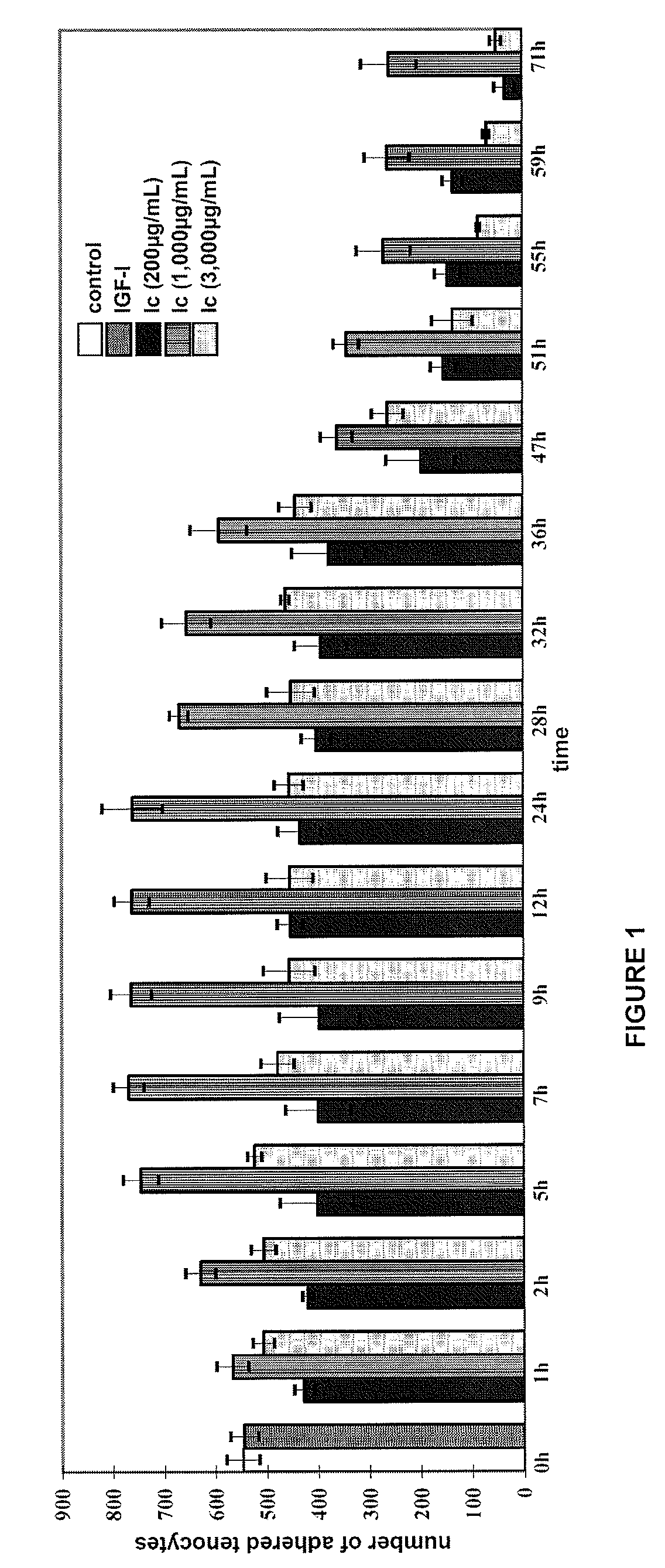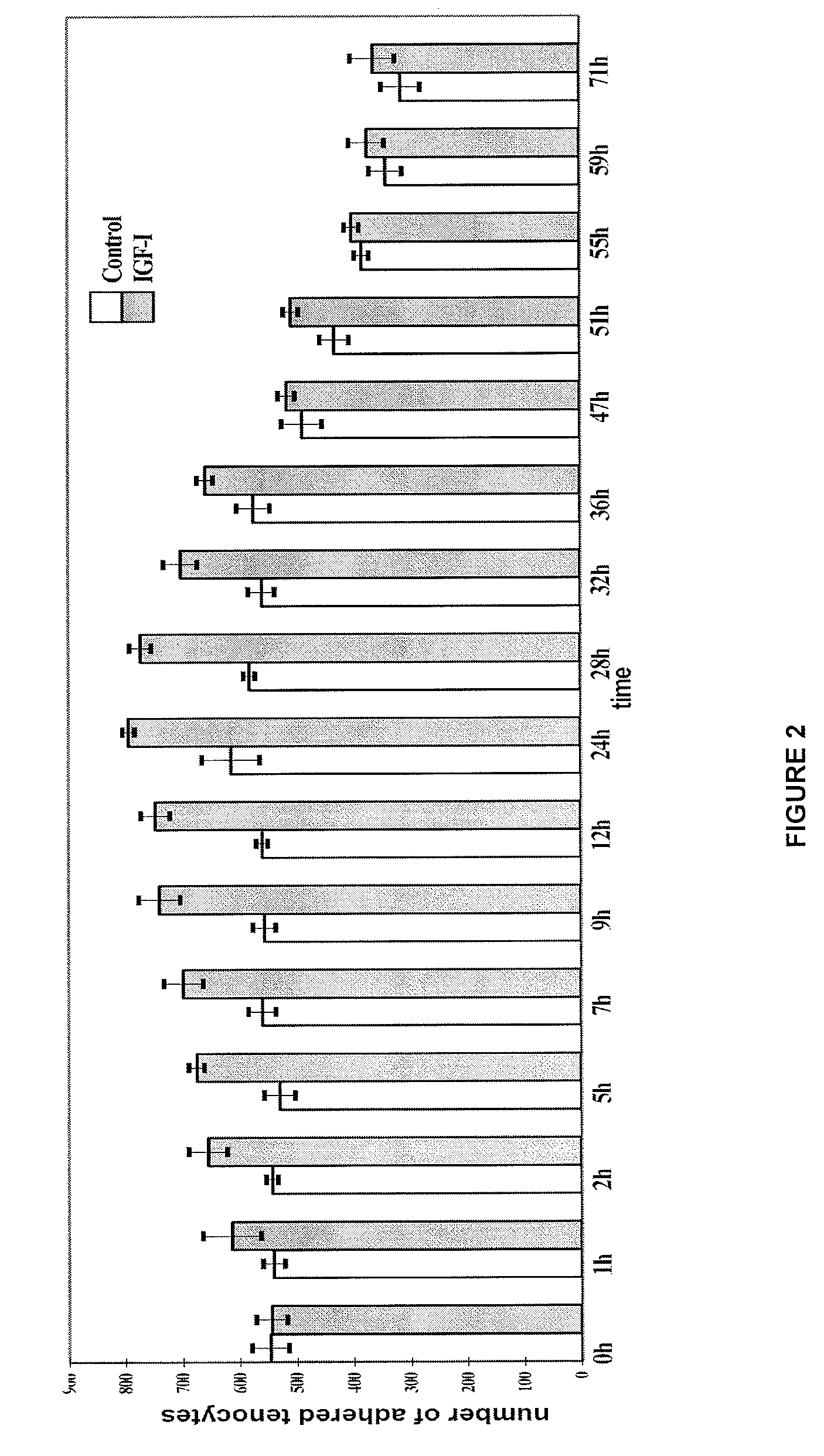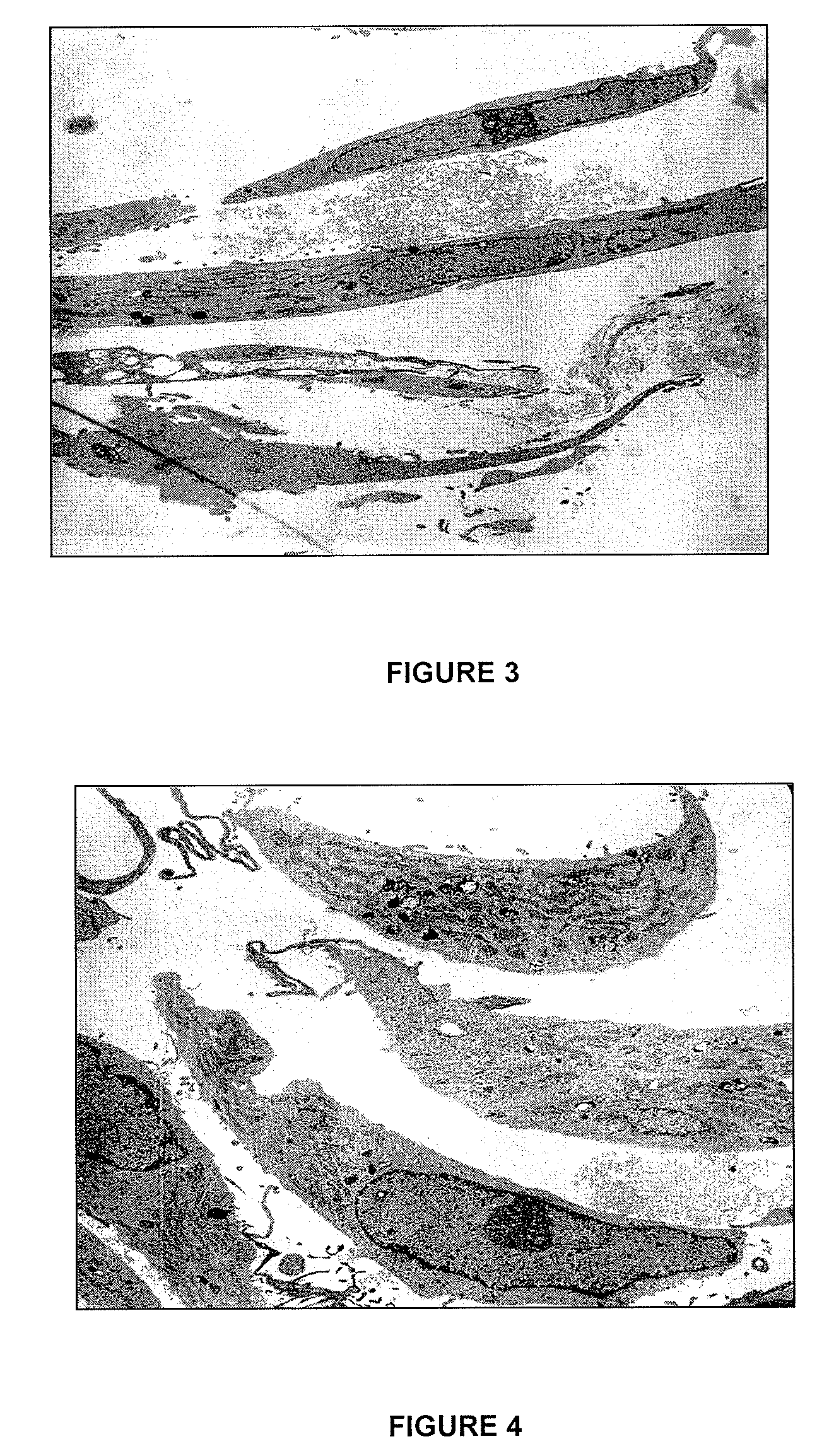Disaccharides for the treatment of tendons, ligaments, and bones
a technology for disaccharides and tendons, applied in the field of disaccharides for the treatment of tendons, ligaments, bones, etc., can solve the problems of slow healing limited self-repairing capacity of bones and soft tissues such as ligaments and tendons, and low cell density of tendons and ligaments, so as to achieve the effect of absence of toxic effects
- Summary
- Abstract
- Description
- Claims
- Application Information
AI Technical Summary
Benefits of technology
Problems solved by technology
Method used
Image
Examples
example 1
Effect of Compound Ic on Human Tenocyte Adhesion and Proliferation
[0096]The objective was to determine the effect of compound Ic on human tenocyte proliferation and adhesion in an in vitro culture model, since a drug stimulating tenocyte proliferation and adhesion could be especially useful in the treatment or repair of tendons.
[0097]For comparison purposes, the effect of the growth factor IGF-1 on human tenocyte proliferation and adhesion in the same type of in vitro culture model was determined.
[0098]The increase of adhered tenocytes was quantified by means of manual count in ten microscopic fields.
[0099]Materials and Methods of Example 1:
[0100]Human tendon explants (of approximately 3-5 mm) were cultured in a culture flask with culture medium formed by 10% FCS, DMEM / Ham-12 (50 / 50) (Dulbecco's Modified Eagle's Medium with Ham-12), 50 IU / mL of penicillin / streptomycin, 25 g / mL of ascorbic acid, 2.5 μg / mL of amphotericin B, 1% glutamine and 1% essential amino acids. After 1-2 weeks, ...
example 2
Effect of a Mixture of Chondroitin Sulphate and Compound Ic on Human Tenocyte Adhesion and Proliferation
[0106]The methodology described in Example 1 was followed, but in this case 12-well plates were prepared with 10,000 tenocytes / well. The mixture of chondroitin sulphate and compound Ic (CS / Ic) was assayed at three concentrations: 500 / 500, 1,000 / 200 and 1,000 / 500 μg / mL.
[0107]Results of Example 2:
[0108]Of the three assayed concentrations of the mixture formed by chondroitin sulphate and compound Ic (CS / Ic), the optimal concentration is 1,000 / 500 μg / mL (FIG. 9). At this concentration and after 72 hours, the CS / Ic mixture causes an increase of the order of 33% in the number of adhered tenocytes with respect to the control (without compound), it can therefore be concluded that said mixture stimulates human tenocyte proliferation and adhesion.
example 3
Evaluation of the Tenocytes by Transmission Electron Microscopy after being Incubated with Compound Ic
[0109]The objective was to observe the vitality and the signs of apoptosis of the cells after one hour of incubation without compound (control) or with the compound Ic of the invention, in order to be able to determine the toxicity of the compound of the invention.
[0110]Materials and Methods of Example 3:
[0111]The sufficient amount of tenocytes in a monolayer was prepared according to the methodology described in Example 1. Then 100,000 tenocytes per 35 mm Petri dish were seeded with 4 mL of culture medium formed by 10% FCS, DMEM / Ham-12 (50 / 50) (Dulbecco's Modified Eagle's Medium with Ham-12), 50 IU / mL of penicillin / streptomycin, 25 μg / mL of ascorbic acid, 2.5 μg / mL of amphotericin B, 1% glutamine and 1% essential amino acids, and they were incubated until reaching confluence. The cells were washed three times with serum-free medium (0.5% FCS) and were incubated for 30 minutes with ...
PUM
| Property | Measurement | Unit |
|---|---|---|
| molecular weight | aaaaa | aaaaa |
| molecular weight | aaaaa | aaaaa |
| molecular weight | aaaaa | aaaaa |
Abstract
Description
Claims
Application Information
 Login to View More
Login to View More - R&D
- Intellectual Property
- Life Sciences
- Materials
- Tech Scout
- Unparalleled Data Quality
- Higher Quality Content
- 60% Fewer Hallucinations
Browse by: Latest US Patents, China's latest patents, Technical Efficacy Thesaurus, Application Domain, Technology Topic, Popular Technical Reports.
© 2025 PatSnap. All rights reserved.Legal|Privacy policy|Modern Slavery Act Transparency Statement|Sitemap|About US| Contact US: help@patsnap.com



